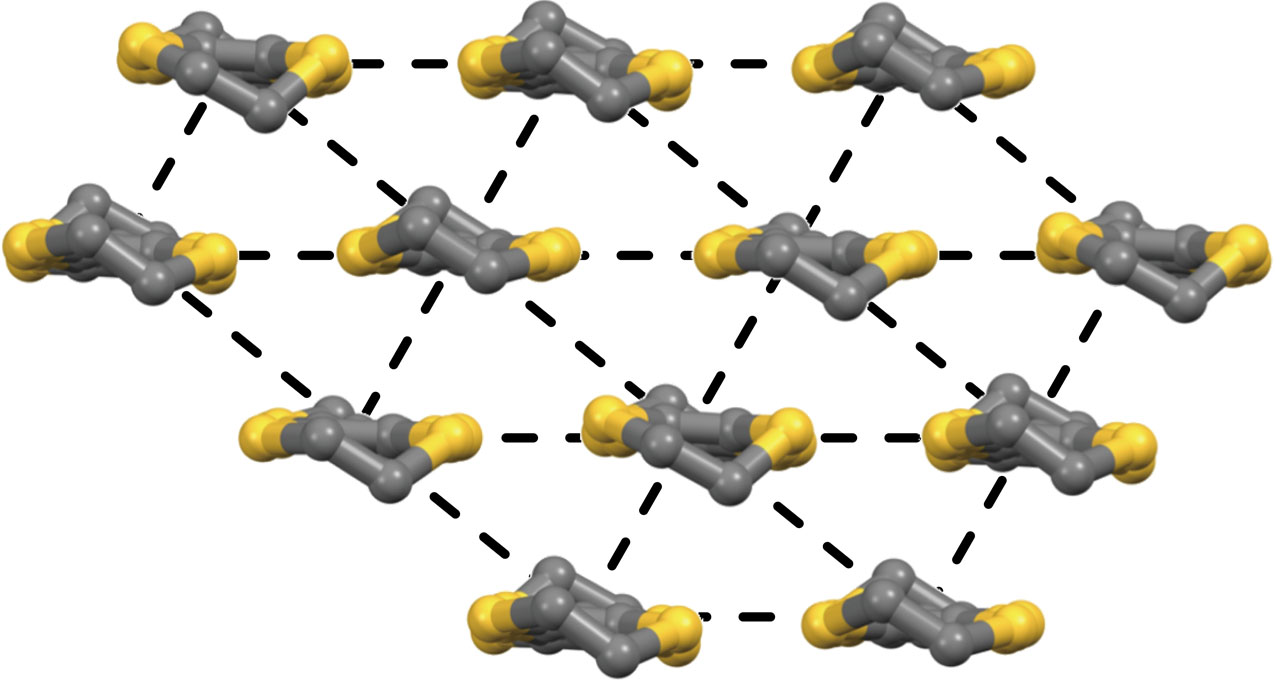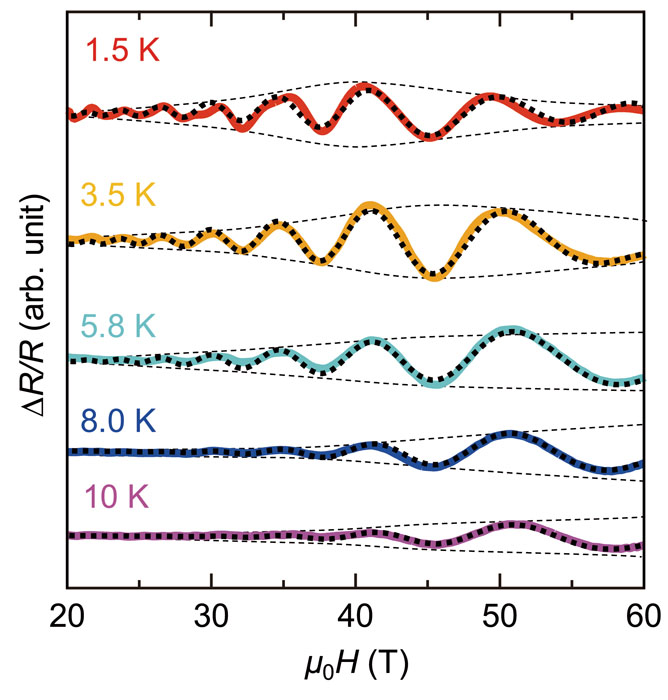Charge-Fluctuation-Mediated Superconductivity in Organic Complexes
Kindo, Kohama, and Tokunaga Groups
Electron pairing in unconventional superconductors is driven by quantum fluctuations of electronic degrees of freedom. For various unconventional superconductors, such as high-Tc cuprates and heavy-fermion systems, their magnetic degrees of freedom often play an essential role in the pairing mechanisms. Although charge degrees of freedom can also mediate the Cooper-pair formation as exotic pairings, experimental investigation of the charge-fluctuation-mediated superconductivity has been insufficient for detailed discussion because only a few materials show superconductivity with pure charge instability.
The βʹʹ-type organic charge-transfer complexes are known as the candidates showing superconductivity mediated by charge fluctuations. As shown in Fig. 1, the organic molecules in the βʹʹ-type structure are uniformly arranged. Since the valence of each molecule is +0.5, the energy band of the electronic system is 1/4-filled. In this case, it is known that charge density exhibits inhomogeneous distribution in neighboring sites to reduce the intersite Coulomb repulsion when electron correlations are strong. Therefore, it is expected that this charge instability can trigger a superconducting transition. In the present research, we investigated the low-temperature electronic states of some βʹʹ-type materials, βʹʹ-(BEDT-TTF)4[(H3O)M(C2O4)3]G (M=metal ions, G=guest molecules), using various measurements and unveiled that the superconductivity in this compound is possibly mediated by charge fluctuations [1,2].
Figure 2 shows the high-magnetic-field quantum oscillations in magnetoresistance ΔR/R of βʹʹ-(BEDT-TTF)4[(H3O)Ga(C2O4)3]PhNO2 at various temperatures. As shown by the dashed envelopes, the amplitude of the oscillations is modulated below 8 K. Detailed analyses with the Lifshits-Kosevich formula indicate that a transition occurs at 8 K, leading to a split of the Fermi pocket and an enhancement of the effective mass. This transition is observed in ultrasonic properties whereas a low-temperature x-ray diffraction measurement detects no significant anomaly at the temperature. Also, this transition has no magnetic field dependence. As orbital degrees of freedom are quenched in the present material, these results mean that a local lattice modulation is induced by charge disproportionation. Just below this transition temperature, this compound shows a transition from the charge disproportionation to the superconducting state at Tc~7 K. By replacement of the guest molecules, Tc is reduced with a decline of the charge disproportionation. This tendency implies that the charge fluctuations enhanced in this compound govern the pairing of the superconductivity.
Besides, we performed heat capacity measurements to determine the gap symmetry of the superconductivity. The temperature, magnetic field, and field-angle dependence of the heat capacity indicates that the gap function is anisotropic and has no node on the Fermi surface, distinct from that of nodal d-wave symmetry arising from antiferromagnetic spin fluctuations observed in many unconventional superconductors. This full-gapped nature suggests that intersite repulsion, leading to the charge disproportionation, works as an attractive force for the on-site Cooper pairing.
These results indicate that the present superconductivity is formed by the charge fluctuations, and also, elucidate the detailed features of the charge-fluctuation-mediated superconductivity.
References
- [1] S. Imajo, H. Akutsu, A. Akutsu-Sato, A. L. Morritt, L. Martin, and Y. Nakazawa, Phys. Rev. Res. 1, 033184 (2019).
- [2] S. Imajo, H. Akutsu, R. Kurihara, T. Yajima, Y. Kohama, M. Tokunaga, K. Kindo, and Y. Nakazawa, Phys. Rev. Lett. 125, 177002 (2020).


